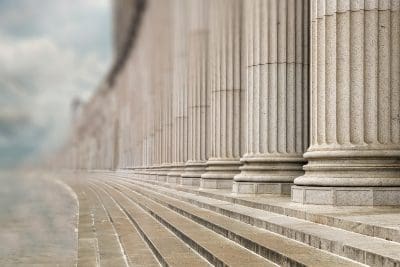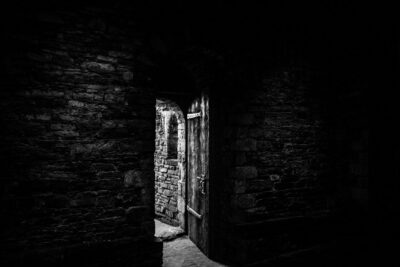Why was the Temple designed by God to make the people of Israel ashamed of their sins?
Ezekiel 43:10-12
Since April of 2022, I have been memorizing the Book of Ezekiel. As my long journey through this complex vision comes to an end, it brings me to nine chapters centered on a visionary temple: Ezekiel 40-48. The verses are filled with meticulous details of the architecture, dimensions, details of the temple that an angel is showing the prophet. In the angel’s hand are a measuring cord and a long measuring staff. The word “cubit” or “cubits” appear 137 times in these nine chapters. As I read about the walls, porticos, parapets, gateways, stairs, courtyards, doors, tables, benches, pillars, doorjambs, windows and other features of the temple, my mind began to swim and glaze over. Why, O Lord? Why the meticulous descriptions of a temple that seems like it was never built.
As I was pondering the “Why?” question, I came across the passage cited above, Ezekiel 43:10-12. There the question seems to be answered: the purpose of the vision of the temple and all its entrances, exits, and regulations, is to make the people of Israel ashamed of their sins. But how?
Two possible answers. First, that they may acknowledge that the destruction of Solomon’s temple was because of their sins. Because of all the wickedness of the nation of Israel, the glory of the Lord had left the temple so that it could be destroyed by the Babylonians. (Ezek. 10:18) It was because of the sins and unfaithfulness of Israel to God that they were sent into exile among the nations. (Ezek. 39:23) So the very fact that there had to be a new temple built was because of their sins.
However, the better answer is the second one: the Temple itself is a rebuke to a sinful nation. The walls are a barrier keeping a sinful and corrupt nation away from a holy God. The Temple and the whole city are to be the dwelling place of this glorious and holy God. The book ends with the clear assertion, “The Lord is there.” But the walls are there to keep the people away. No one but the priests, the descendants of Zadok, are allowed to draw near to God. (Ezek. 40:46) Everyone else is to say away.
“The existence of the barriers—the walls of the Temple—are a constant rebuke to a sinful and corrupt people. The consistent lesson of the Old Covenant from God to the people was, ‘This far you may come, and no farther.'”
As Hebrews 9:8 was saying about the Tabernacle, and by extension, the Temple: “The Holy Spirit was showing by this that the way into the Most Holy Place had not yet been disclosed as long as the first tabernacle was still standing.” The existence of the barriers—the walls of the Temple—are a constant rebuke to a sinful and corrupt people. The consistent lesson of the Old Covenant from God to the people was, “This far you may come, and no farther.” As he said to Moses at the burning bush, “Do not come any closer. Take your shoes off, for the ground on which you are standing is holy ground.” And as he said to the whole nation at Mt. Sinai, “Put a barrier around the mountain and kill anyone who comes up on the mountain.”
So, it was because of their sins that they would need a new temple; and it was because of their sins that they would need a temple at all.
But the glorious good news of the New Covenant is that Christ’s death on the cross has opened for us a “new and living way” into the very presence of God, into the Most Holy Place. When Jesus died, the curtain in the temple was torn in two from top to bottom. Effectively every wall of the Temple came falling down at that instant. No barriers whatsoever in access to a holy God. In Jesus, we are commanded to draw near to God. (Heb. 10:22)





